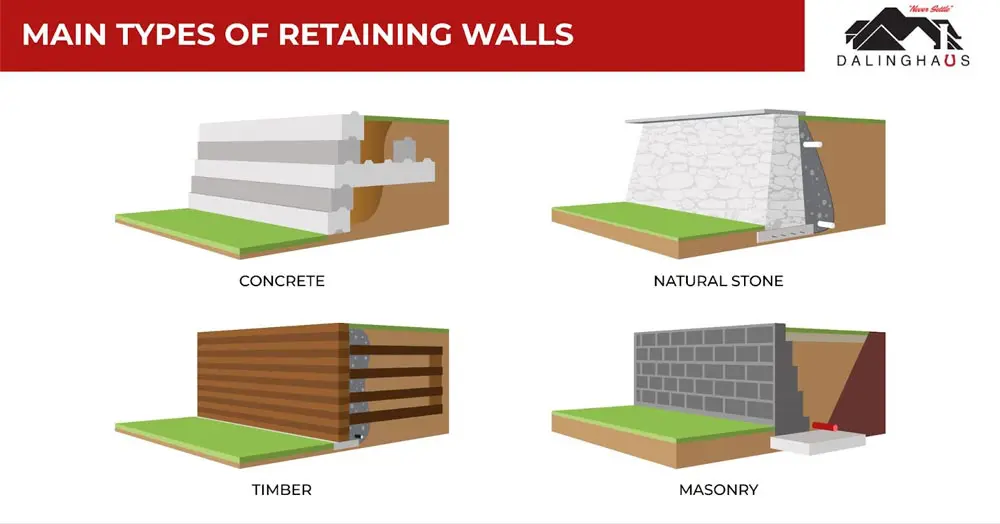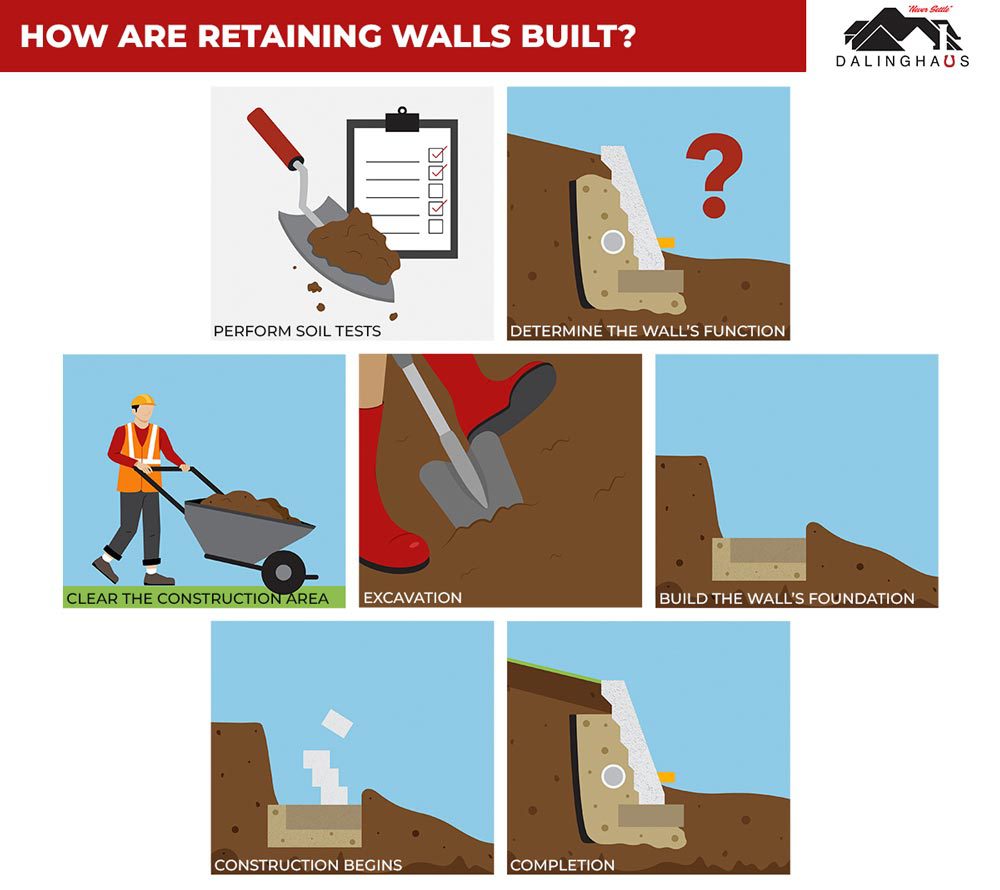If you are unfamiliar with common construction terms, then you likely cannot explain what retaining walls are and how they can be so important to a property. But after reading this article, that will no longer be the case. In the sections below, we’ll break down the basics of what retaining walls are and the benefits they can provide. Read on to learn everything you need to know about these useful structures.
What Is a Retaining Wall?
The simplest way to define a retaining wall is to describe it as a structure that holds back the earth. Like other walls, retaining walls have a visible vertical face on the front side. However, the backside of a retaining wall is embedded into the hill or slope it retains. The design of these structures allows them to support amazing amounts of weight while also managing stormwater.
While all retaining walls serve this same fundamental purpose, they can come in many different forms. Likewise, there is a considerable list of benefits that retaining walls can provide, which you’ll learn about in the next section.
Benefits of Retaining Walls
Although most people don’t give retaining walls much consideration in their daily lives, these structures provide incredible benefits to many properties. Here are a few of the top advantages that a retaining wall can provide to a sloping site.
Reduced Erosion
If you live on a property that has steep slopes, the odds are you have erosion issues. Each time it rains, the surface flow causes soil and stones to break loose and slide down the slope.
Over time, this can dramatically change the shape of your slope and deposit significant amounts of soil and debris at the base of it. In extreme cases, slope erosion can lead to landslides that are both dangerous and capable of causing costly damage.
One of the greatest benefits of a retaining wall is that it can reduce the effect of erosion on your slopes. Installing a retaining wall allows you to lessen the severity of the slopes both above and below the wall, which in turn reduces the erosive effect that rainwater can have.
Additionally, a well-built retaining wall will include a full drainage system. This drainage system will intercept water as it flows down your slope, which also lessens the amount of erosion it can cause.
Increased Usable Space
Another reason why people install retaining walls on their properties is that they can help add more usable space to the yard. When your yard slopes significantly, it becomes incredibly difficult to create patios, walkways, and other outdoor living spaces.
As mentioned above, retaining walls give you the chance to lessen the steepness of the slopes both above and below the wall. This simple structural addition can drastically increase the amount of level area on your property. At times, the retaining wall itself can become usable space, because many rise to the perfect seat-level height.
Stormwater Management
If your sloping property causes significant drainage problems, then installing a retaining wall may help resolve the issue. The best retaining walls include significant amounts of drainage materials behind the wall.
These materials often include crushed stones that allow groundwater to trickle down into a buried perforated pipe. That pipe will then convey the water away from your home and yard so that it no longer causes a problem.
Aesthetic Appeal
Although the benefits of retaining walls we have mentioned so far all relate to functional goals, these structures can also go a long way toward improving the overall aesthetic appeal of your property.
A thoughtfully designed retaining wall can be incredibly attractive and will complement the visual characteristics of your home and yard. Retaining walls are especially impressive when they are made up of natural stone and other attractive materials.
While serving functional objectives such as reducing erosion and controlling stormwater should be your key focus when installing a retaining wall, you should also consider aesthetics. Once you’re sure that your retaining wall can serve its main purpose, you can then shift your attention toward the features and design choices that will make your wall impressive to look at as well.
Main Types of Retaining Walls
Retaining walls come in many different styles – most of which are defined by the materials that make up the wall. Some of the most common types of retaining walls are in the list below:

- Concrete retaining walls
- Natural stone retaining walls
- Timber retaining walls
- Masonry retaining walls
Each of the material types in the list above comes with distinct advantages and disadvantages, but all of them are capable of providing an effective retaining wall that can benefit your property. The materials you choose for your wall also have a major impact on its overall style and appearance.
Signs That Your Property Might Need a Retaining Wall
While retaining walls are very useful in many cases, not every homeowner needs to install one on their property. Instead, there are some specific signs you can look out for that indicate your yard may need one of these structures. Below are a few of the top signs that you could benefit from a new retaining wall:
- Ongoing persistent erosion
- Steep slopes making your yard unusable
- Poor drainage
While these are the top concerns that lead to the construction of a retaining wall, there are plenty of other reasons why you might want to build one of these structures. As always, when it comes to construction practices, it is best to hire an experienced professional for all your retaining wall needs.
Need a Retaining Wall for Your Property?
If you find that your property needs a retaining wall, it is important for you to find a skilled professional team that can build it correctly. Only by hiring a team that follows the best construction practices can you trust your retaining wall to serve you for years to come.

For anyone living in Southern California, Arizona, or Nevada, Dalinghaus Construction is ready to help you determine whether building a retaining wall is right for you. Along with providing hillside repair, we are also experts in foundation repair, concrete services, seawall repair, and much more. If you want to learn more about how we can help you, reach out for a free evaluation today!






